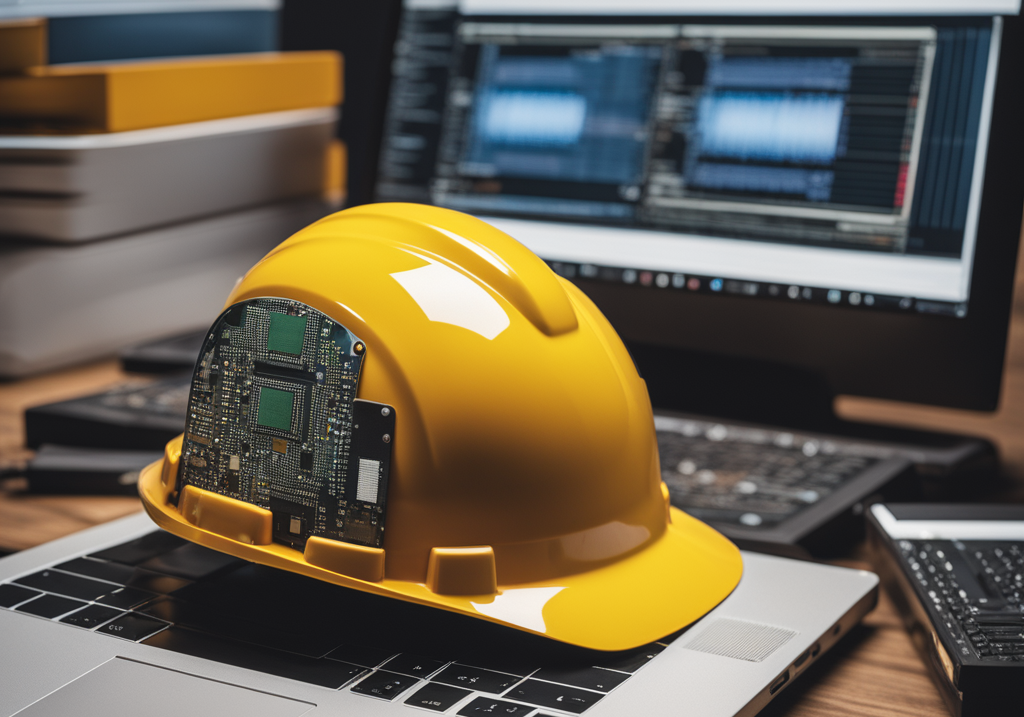The Internet of Things - revolutionising Construction
You do not get more conservative than the construction industry, known for its traditional reluctance to accept any kind of change, but like it or not, the built environment is on the cusp of a significant transformation driven by the Internet of Things (IoT). This interconnected network of devices promises to streamline processes, enhance efficiency, improve safety and ultimately reshape the entire construction landscape, writes John Ridgeway.
Market research suggests the global IoT construction sector is poised for exponential growth. According to a report by SNS Insider, the market size is expected to reach a staggering USD 48.2 billion by 2031, with a Compound Annual Growth Rate (CAGR) of 16.4%.
It is growth fuelled by several key factors as construction projects become increasingly complex, demanding tighter deadlines and stricter budgets. IoT solutions offer real-time data collection, improved resource allocation and better progress tracking, leading to significant efficiency gains.
Construction sites are also inherently hazardous environments. IoT sensors can monitor environmental conditions, detect potential hazards and even track worker movements, promoting a safer work environment.
IoT solutions can further enable better waste management, optimise energy consumption through smart building features and facilitate the use of sustainable building materials. As governments around the world increasingly implement stricter regulations related to safety and environmental protection in construction, IoT solutions will also help construction companies comply with these regulations and demonstrate their commitment to responsible practices.
Transforming the industry
The adoption of IoT in construction will have a profound impact on all stakeholders involved in the building process. It will empower construction companies to optimise resource allocation, improve project planning and make data-driven decisions. Real-time data from sensors can be used for predictive maintenance of equipment, reducing downtime and costs. Additionally, IoT-powered wearables can track workers' activities and locations, enhancing safety and accountability.

IoT data can be integrated into Building Information Modelling (BIM) software, leading to more accurate construction plans and simulations. Real-time data can also be used to fine-tune designs and building performance for energy efficiency and occupant comfort.
The technology will further streamline communication and collaboration between the different parties involved in the construction project. Real-time data sharing provides better visibility into project progress, facilitating coordinated efforts and ensuring timely completion.
IoT will also enable building owners to monitor and manage their facilities more effectively. Smart building technologies can optimise energy consumption, provide real-time data on building health and performance and enhance occupant comfort.
A glimpse into the future
All this means that the future of construction with IoT integration is brimming with exciting possibilities. IoT-powered autonomous vehicles and robots could handle repetitive and dangerous tasks, improving safety and productivity on construction sites.
Construction projects could be monitored and managed remotely using IoT sensors and data analytics, enabling better decision-making and improved project control. The integration of 3D printing with IoT could revolutionise construction, allowing for rapid and precise on-site fabrication of building components.
IoT sensors embedded in buildings can also collect data on equipment and building systems, enabling predictive maintenance and preventing costly breakdowns. We are also likely to see more AR and VR used for training construction workers, visualising building designs, and facilitating remote collaboration on projects.
Challenges and considerations
Despite the promising future, several challenges still need to be addressed. IoT devices generate vast amounts of data, making them vulnerable to cyberattacks. Robust security measures are critical to protect sensitive information and maintain operational integrity.
The construction industry also lacks standardised protocols for data collection and communication between different IoT devices. Standardisation efforts are crucial to ensure seamless integration and data exchange.
Most importantly, successful implementation of IoT solutions requires a workforce with the skills to manage, analyse, and use the data generated by these devices. Training programmes and skills development are essential to bridge the gap.
The power of partnerships
As the construction industry embraces IoT, collaboration between different stakeholders will be crucial, if it is to succeed. Construction companies will need to collaborate with technology providers to develop and implement customised IoT solutions that address their specific needs.
Industry associations will need to work with educational institutions to develop bespoke training programmes that equip the workforce with the necessary skills to navigate the evolving technological landscape.
Governments too, must incentivise the adoption of IoT in construction by providing financial assistance and streamlining regulatory processes. Collaboration with the industry will encourage the development of standardised protocols for data collection and communication.
The road ahead
The future of construction is inextricably linked with the growth and integration of IoT. As the technology matures and adoption rates rise, we can expect to see even more innovative applications emerge.
For example, the IoT revolution in construction is not just about technology - it's about a holistic change in how projects are planned, executed, and managed. A cultural shift is necessary to embrace data-driven decision-making and collaborative workflows.
Improved safety, sustainability, and building performance are equally important outcomes. Successful implementation will require a multi-pronged approach, with collaboration between stakeholders, investments in training and a commitment to addressing security challenges.
The construction industry stands at the precipice of a transformative era. By embracing the power of IoT, stakeholders can build a future that is not only more efficient but also safer, more sustainable, and ultimately, better for everyone involved.
The integration of IoT in construction is a paradigm shift, ushering in an era of enhanced efficiency, improved safety and sustainable building practices. Challenges remain, but the potential benefits are undeniable – and we at Talk.Build will be here to record every single step of the way.
Additional Blogs

Construction’s obsession with blame instead of learning
Construction is one of the most technically advanced industries in the built environment, yet culturally it often behaves like one of the least reflective. When things go wrong and they frequently...
Read moreHow risk Is routinely pushed down the supply chain
Risk is an unavoidable part of construction. Every project involves uncertainty around ground conditions, weather, design coordination, procurement, labour and programme. Yet while risk is inherent,...
Read more

What if Building Control went fully digital?
Building control governs structural integrity, fire protection, energy efficiency, accessibility and countless other aspects of design and construction. Historically, this process has been highly...
Read more